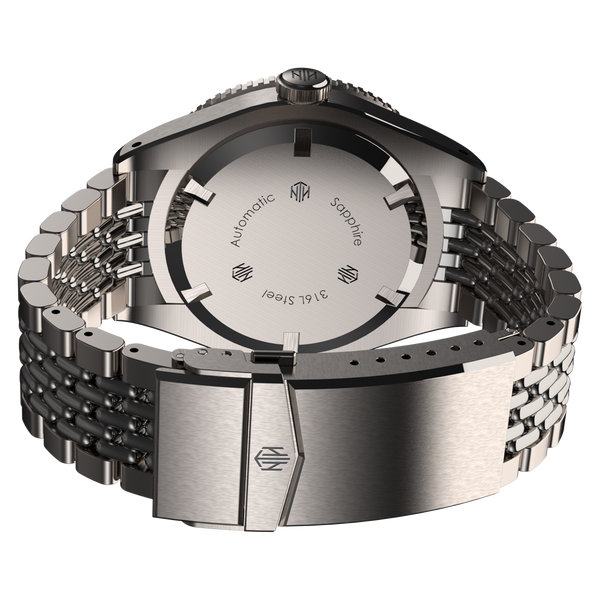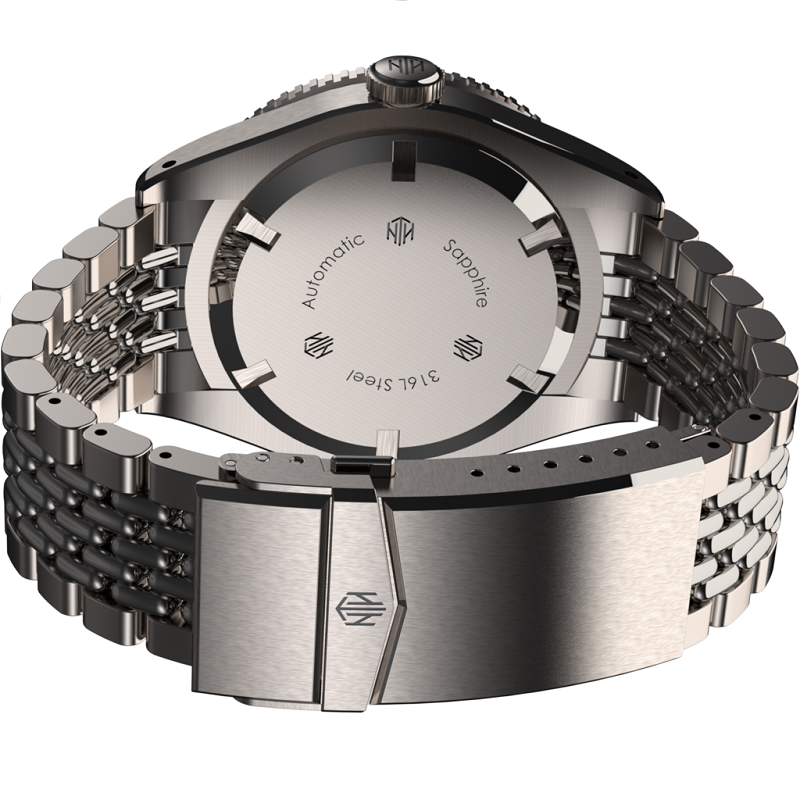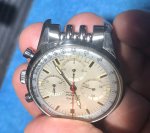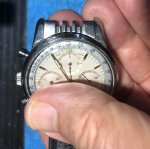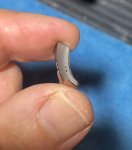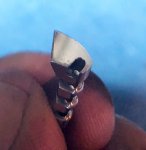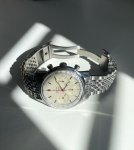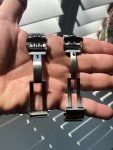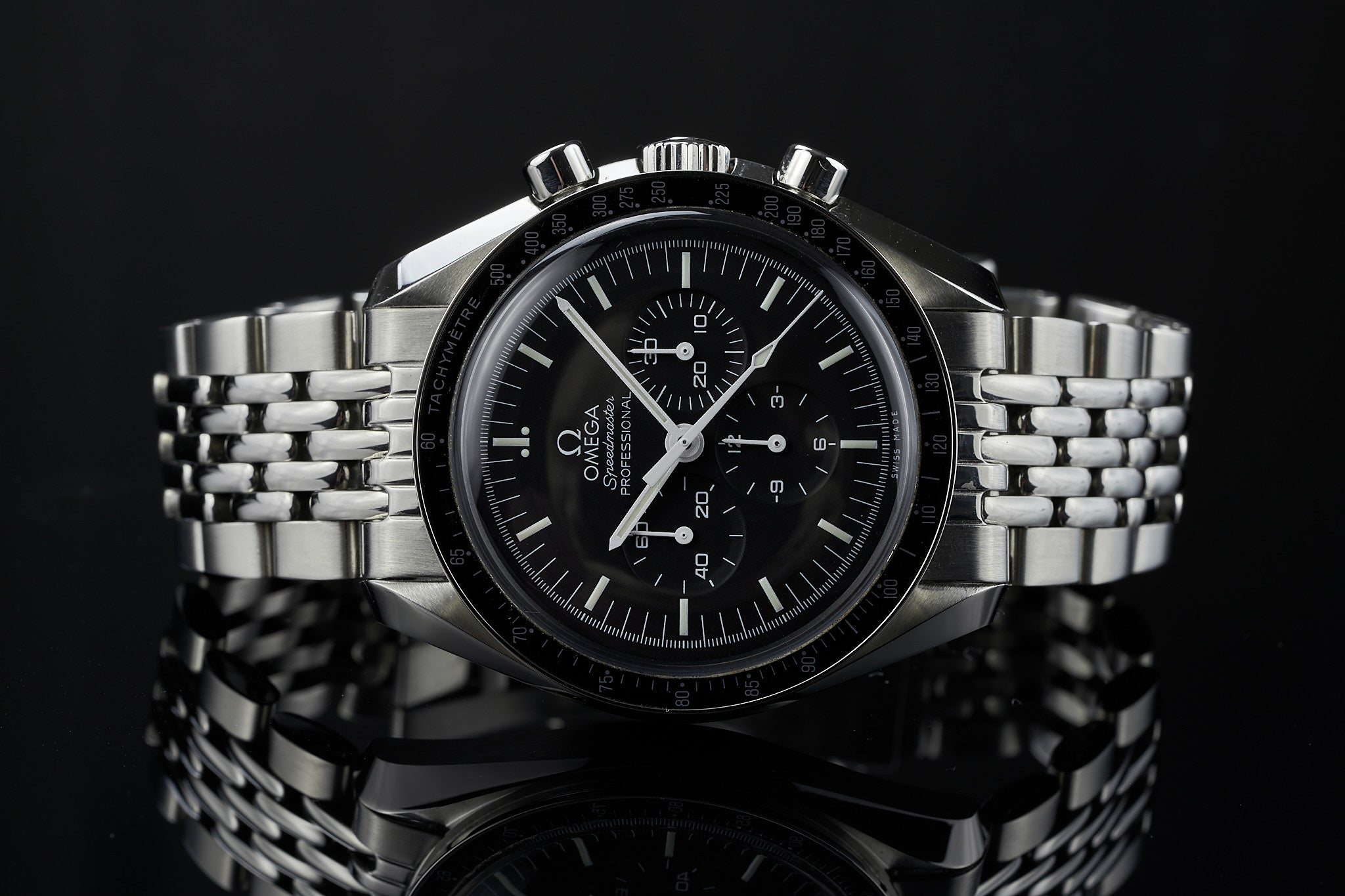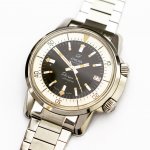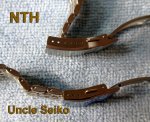Here and there, various posts have been made about Beads of Rice bracelets for the Graphs. I also posted 'here and there' a couple of times myself.
I had coveted a genuine period BoR bracelet for some time and I finally had occasion to purchase one some months ago.
It's not certain whether the one I bought came with an Enicar watch straight out of the factory, but it is reasonably clear it was made and sold in the 1960s and is of comparable quality. Mine has the Saturn logo on the face of the clasp, but there is no mention of Enicar on the inside.
Upon receiving the bracelet, and shortly after the glow of acquisition wore off, I was struck by a cold and harsh reality. The quality of the bracelet was poor by today's standards and perhaps barely appropriate for a $300 watch of the day, but not a thing one should install on a watch of value today. I was underwhelmed, to say the least.
The old bracelet is flimsy. Clearly it was cheap to make. The gauge of the stainless material used on the clasp is light. There is no safety catch or mechanism even similar to what may be found on women's jewelry of the day. The method of keeping the clasp closed is a dimple or pimple on the inside part of the clasp and a detent on the outer part. In other words, it is a friction or snap fit subject to wear and likely to loosen over time. As if that were not enough, the end-links are hollow or open, made of formed stainless and the fit to the lug is snug, but movement cannot be completely eliminated. I would refer to this style of end-link as a "scratch-maker" style end-link.
It's crap. There may be some better crap out there from the period, but who aspires to having better crap?
So apart from being cheaply made and carrying the very real risk of dropping or losing the watch and also scratching the watch, these BoR bracelets of the day are quite good.
As I have said elsewhere, I bought a Strapcode Jubilee bracelet for my SARB017 Alpinist a couple years ago and I was nearly ecstatic with the quality of that product. Recently, Strapcode introduced a BoR bracelet in three versions for Orient and Seiko watches, but only in 22 mm lug-width versions.
Nothing suitable from Strapcode as yet, but now there is this:
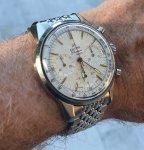
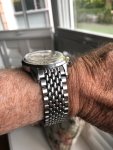
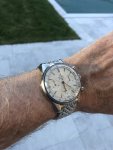
I had coveted a genuine period BoR bracelet for some time and I finally had occasion to purchase one some months ago.
It's not certain whether the one I bought came with an Enicar watch straight out of the factory, but it is reasonably clear it was made and sold in the 1960s and is of comparable quality. Mine has the Saturn logo on the face of the clasp, but there is no mention of Enicar on the inside.
Upon receiving the bracelet, and shortly after the glow of acquisition wore off, I was struck by a cold and harsh reality. The quality of the bracelet was poor by today's standards and perhaps barely appropriate for a $300 watch of the day, but not a thing one should install on a watch of value today. I was underwhelmed, to say the least.
The old bracelet is flimsy. Clearly it was cheap to make. The gauge of the stainless material used on the clasp is light. There is no safety catch or mechanism even similar to what may be found on women's jewelry of the day. The method of keeping the clasp closed is a dimple or pimple on the inside part of the clasp and a detent on the outer part. In other words, it is a friction or snap fit subject to wear and likely to loosen over time. As if that were not enough, the end-links are hollow or open, made of formed stainless and the fit to the lug is snug, but movement cannot be completely eliminated. I would refer to this style of end-link as a "scratch-maker" style end-link.
It's crap. There may be some better crap out there from the period, but who aspires to having better crap?
So apart from being cheaply made and carrying the very real risk of dropping or losing the watch and also scratching the watch, these BoR bracelets of the day are quite good.
As I have said elsewhere, I bought a Strapcode Jubilee bracelet for my SARB017 Alpinist a couple years ago and I was nearly ecstatic with the quality of that product. Recently, Strapcode introduced a BoR bracelet in three versions for Orient and Seiko watches, but only in 22 mm lug-width versions.
Nothing suitable from Strapcode as yet, but now there is this:




